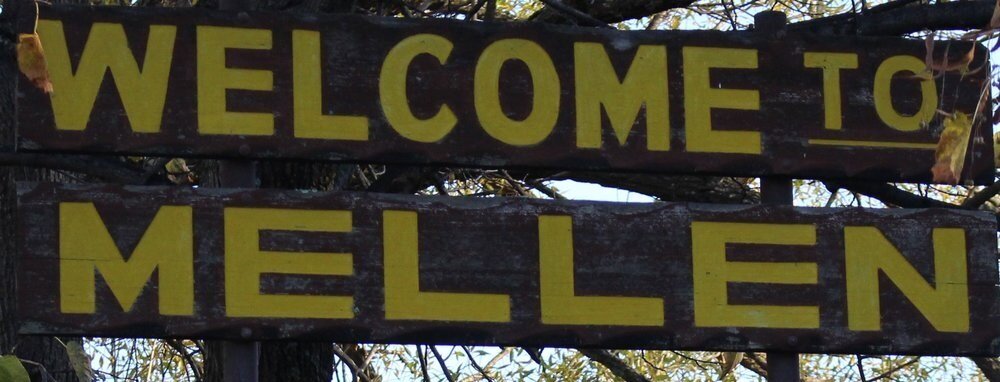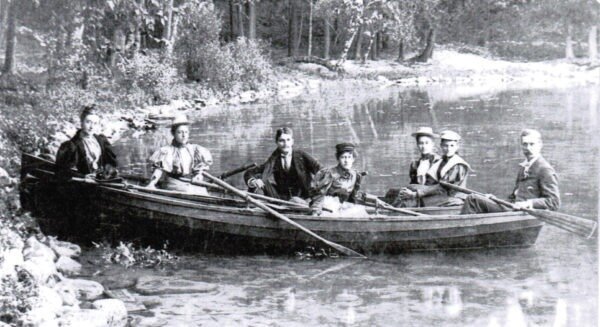Cryptid Profile: The Father of All Turtles
It is a scientific fact that there are well over 100 different species of turtle living among us in the world today. Some quick examples of these species include Alligator Snappers, Box, Red Ear Sliders, Mud, Desert Box, Florida Softshell, Sea, Wood, Bog, Spotted, Ninja, and Leatherback. All of these reptiles can grow to a wide range of sizes; some clock in at only a few inches long, while the largest (the Leatherback) is able to grow anywhere from 4ft to 9ft long depending on age and environment. But what if there was a turtle that was able to grow to sizes never before imagined, quite possibly nearing that of a whale, what would you call it? The answer is simple, you would call it The Father of All Turtles.
First reported in 1494 by explorer Christopher Columbus near the Dominican Republic, the Father of All Turtles was described as being the size of a whale, while also possessing a long tail with a fin on each side to help with movement through the water. The giant turtle was said to have kept its head out of the water the entire time it swam within close proximity of Columbus’s ship, the Santa Maria. Eventually, the Turtle felt it had spent enough time on the surface and dove back below the surface of the Atlantic where it was seen no more by the explorer and his men.
Fast forward 389yrs later and the Father of All Turtles was seen and documented yet again by another passing ship, the Annie L. Hall. The official sighting is said to have taken place on March 30th, 1883 when the vessel came across what appeared to be an overturned boat near the Grand Banks off the coast of Newfoundland. As the curious crew approached the bobbing hull of the overturned ship, they quickly realized that it was anything but. What they once assumed was nothing more than a damaged, manmade object, actually turned out to be the giant shell of a massive turtle. As the ship got closer so as to take a closer look, the giant whitish-gray shell began to move. The stunned crew claimed the giant turtle they had encountered was roughly 40ft long, 30ft wide, and possessed four massive flippers each appearing to measure nearly 20ft long. Just like before with Columbus, after coming into close proximity with the ship, the giant ocean dweller calmly and slowly sunk back below the surface and dove back into the deep.
Jump ahead another 72 years to March 8th, 1955, and the giant turtle (or perhaps turtles) would begin to show up more frequently. A historical account documenting such an occurrence involved a man by the name of L. Alejandro Velasco who, while at the time, was stranded on a raft after being washed overboard by a rogue wave while on the destroyer ship Caldas. The account claims that while drifting through the ocean, Velasco sighted an absolutely gigantic turtle while somewhere in the Gulf of Uraba near Colombia. He recalled that the turtle looked to be a dull yellow color and that it measured somewhat over 14ft long. The creature was only visible for a short time before disappearing below the surface.
The next sighting, which proves the turtles were being seen much more quickly than before, would come less than a year later in June of 1956. This time, the massive reptile would be spotted by the crew of the cargo ship Rhapsody and would be witnessed off the coast of Nova Scotia. The men on board stated that the best estimate they could give as to the size of the turtle would be in the area of nearly 45ft. Due to the close distance, the turtle was from the ship, some members of the crew stated that the front flippers appeared to be almost 15ft long and the back was roughly 13ft long. The men also stated that the giant was able to lift its head and neck nearly 8ft out of the water while it slowly swam along the surface. After some time, just like all the other past sightings, the water giant slowly sank back below the surface and disappeared from view.
Now it is said, and this should be taken with a grain of salt, that after hearing reports of ships witnessing and sailing within close proximity of absolutely giant turtles, the Canadian Coastguard started issuing warnings to local boats about the slim possibility of encountering these creatures. Anyone venturing out into the great vastness of the surrounding ocean was warned to take caution and be on high alert while out on the water so as to avoid sinking if contact was made. Again though, this may just be a rumor as I cannot verify these accounts are true.
The third sighting involving giant turtles in the 1950s is believed to have taken place on September 13th, 1959, and it is said to have involved two shark fishermen by the names of Tex Geddes and James Gavin. The story goes that while the two men were fishing off the coast of Scotland, they witnessed an absolutely gigantic turtle break the surface of the water, steady itself in one spot against the current, and then proceed to make its way towards their boat. While they were not able to see the creature from high above like the other witnesses in large ships, they some of the few (along with Alejandro Velasco) witnesses who were able to see it at water level.
The two men claimed while they sat in total shock, they could both see the exposed shell rising tall above the surface. Both Geddes and Gavin claimed that this part of the creature looked to have measured roughly 10ft wide and that it stuck out of the water nearly 3ft high. The head was described as looking roughly the same height as the shell and that it possessed extremely large, almost protruding eyes. Nostrils were not visible but the men were able to see a frighteningly large red mouth set within a flat beak which looked as if it could separate the head completely in half every time it opened. With the turtle still approaching their boat, the men began to get scared that it may try to attack or flip them into the cold water surrounding them. Luckily though, the men would not have to worry for long, because when the creature was within 60ft of their boat, it dipped beneath the surface, swam underneath them, and disappeared from view.
So, could there really be a giant turtle swimming within the Atlantic Ocean waiting to be discovered by modern science, or possibly even rediscovered? Many researchers who have studied these stories feel that the turtle(s) being reported was nothing more than a common Leatherback turtle being spotted under these than desirable conditions. The reason for this is that these turtles can grow upwards of 9ft and have the largest flippers of any sea turtle alive today. The white/yellow color reported by witnesses could be the result of a color mutation or possibly even albinism. Also, unlike other sea turtles, Leatherbacks are known to feed in cold water and are often seen in the Gulf of Saint Lawrence near Quebec and can also be found as far north as Newfoundland. Their main habitat is the open ocean and male Leatherbacks never leave the water over the course of their whole life. So it is easy to see why the Leatherback would be considered the main choice for what these witnesses saw all those years ago. But is it the only choice?
There are other researchers though who feel that the Father of All Turtles may actually be a surviving Archelon ischyros, an extinct reptile that is believed to be the largest turtle that has ever existed. This Cretaceous period giant is thought to have died out nearly 70 million years ago and widely agreed upon that their main habitat was once a shallow sea that covered modern day North America. The largest skeleton ever found of this beast measures nearly 14ft long and is almost 16ft wide from flipper to flipper. While alive, this turtle is thought to have weighed in at nearly 4,900lbs. In addition to the massive body weight, the giant turtle possessed a pointed tail, a relatively narrow skull, had a large overbite, and high-vaulted shell. Could this be the actual culprit behind the sightings?
Legends of giant turtles have long been found throughout the world and are often the main components of many different religions and religious stories/tales. A prime example of this would be the “world turtle”, which is a giant turtle that carries the entire world on its shell. Variations of this god-like creature can be found within Hindu mythology, Chinese mythology, and various myths and legends from different Native American tribes within North America. Could these ancient stories of giant turtles have actually originated from a chance encounter between a well-versed storyteller from days long gone and a living Archelon ischyros? That is hard to say and we don’t want to have to stretch any facts to make the theory work so we will leave it as a possible what if. But one thing we can say for certain and without any doubt is that eyewitness reports of extremely large and gigantic turtles started coming in regularly enough during the 1950′s that famous Cryptozoologist Bernard Heuvelmans listed the Father of All Turtles as an official classification of sea monster in the 1960′s. So even if science hasn’t officially discovered a gigantic turtle, yet, if the day ever comes, at least we already have a name picked out.
Oh yeah, one more thing, go back up top and reread all the different species of turtle we listed in our quick breakdown. If you didn’t catch it the first time, we are pretty sure one will jump right out at you this second time around. Cowabunga!
-The Pine Barrens Institute
*Image Credit: https://en.wikipedia.org/wiki/Archelon
Do you have a strange tale, family legend, or odd sighting you would like to report? Get in touch with us here to share what you know!
Want more monster stories in your life? If the answer is yes, then make sure to check out our book ‘Monsters In Print: A Collection Of Curious Creatures Known Mostly From Newspapers’, available now from Amazon!
Make sure to also check out our shop for official PBI shirts, totes, buttons, and stickers!































